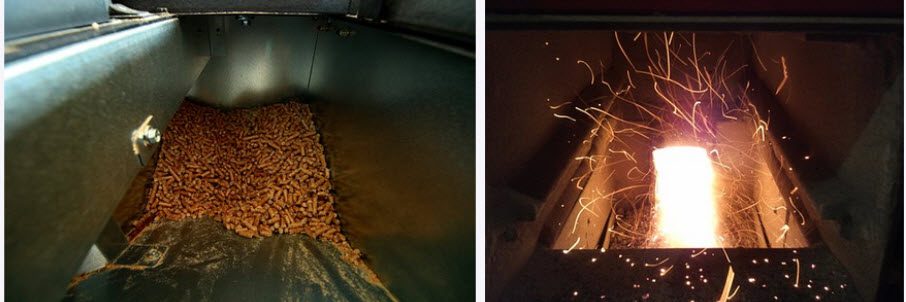Understanding Biofuels
Biofuels represent a sustainable alternative to fossil fuels, harnessing the energy stored in organic materials. Notably, biofuels can be produced from various waste materials, reducing environmental impact and promoting renewable energy sources. The process involves converting biomass, or organic matter, into different types of fuel such as ethanol, biodiesel, and biogas.
Types of Biofuels
Biofuels are commonly categorized into three main types:
Ethanol: Typically derived from plant materials like corn and sugarcane, ethanol can also be produced from cellulosic waste such as agricultural residues.
Biodiesel: Created using oils or fats, whether from animal waste or used cooking oil, this fuel can power diesel engines.
Biogas: Produced via the anaerobic digestion of organic waste material, biogas contains methane and can be used for heating, electricity, or as vehicle fuel.
The Role of Waste Materials
The conversion of waste materials into biofuels plays a crucial role in sustainable energy production. This method not only reduces reliance on fossil fuels but also minimizes waste, providing an environmentally friendly solution.
Agricultural Waste
Agricultural residues, such as straw or corncobs, often become waste post-harvest. These by-products can be processed to produce cellulosic ethanol, utilizing materials that would otherwise be burnt or decomposed naturally. By transforming this waste into fuel, the entire agricultural cycle becomes more efficient.
Moreover, the use of agricultural waste in producing biofuels can provide farmers with additional revenue streams. Instead of leaving residues to decompose, which emits methane, farmers can sell these materials for biofuel production, thus promoting economic sustainability alongside environmental benefits.
Livestock and Animal Waste
Manure and other animal waste can be utilized for biogas production through anaerobic digestion. This process captures methane emissions, a potent greenhouse gas, and converts it into usable energy. Consequently, it can mitigate environmental impacts while providing a renewable energy source.
Furthermore, biogas plants that process livestock waste can contribute to better waste management on farms, reducing the environmental footprint and potential pollutants from runoff. This not only addresses waste management but also encourages farmers to manage resources more efficiently and sustainably.
Municipal Solid Waste
Municipal solid waste (MSW) includes everyday items discarded by the public. Certain components of MSW, such as food scraps, paper, and yard trimmings, can be converted into biofuels. Solutions, such as landfill gas recovery, collect methane from decomposing organic waste and use it for energy production.
The use of MSW for biofuel generation is particularly advantageous in urban areas, where the sheer volume of waste can be overwhelming. By diverting waste from landfills for energy production, cities can reduce the environmental pressure and extend the lifespan of existing landfill spaces. Moreover, leveraging MSW helps in reducing urban waste management costs while simultaneously producing energy.
Technologies in Waste-to-Biofuel Conversion
Various technologies are employed to convert waste materials into biofuels. Advances in technology continue to enhance the efficiency and practicality of these processes.
Fermentation
For ethanol production, fermentation remains an essential technique. Microorganisms break down sugars in biomass, converting them into ethanol and carbon dioxide. Emerging technologies now allow for the fermentation of complex cellulosic materials, expanding the range of usable feedstock.
Recent innovations in fermentation processes have increased the efficiency of converting lignocellulosic materials, which form the cell walls in plants. These advancements offer the potential to utilize a broader spectrum of agricultural and forestry waste, further optimizing resource use.
Transesterification
This chemical process is used to produce biodiesel from fats and oils. Through transesterification, triglycerides in fat react with alcohol to create fatty acid esters—biodiesel—and glycerol, a valuable by-product.
The process of transesterification has been refined over the years to maximize yield and improve the quality of biodiesel produced. Scientists continue to explore catalysts that speed up reactions and enhance purity levels, making biodiesel a more viable and attractive option for powering diesel engines.
Pyrolysis and Gasification
Both pyrolysis and gasification involve heating organic material at high temperatures in the absence of oxygen. Pyrolysis converts biomass into a liquid fuel, bio-oil, while gasification produces syngas, a versatile fuel source.
Pyrolysis and gasification offer flexibility in the types of biomass they can process, from wood chips to other organic materials. The syngas produced can be synthesized into various fuels, including hydrogen, further diversifying the energy options available from waste materials.
Conclusion
Converting waste materials into biofuels not only addresses waste management challenges but also fosters a transition to renewable energy. Advances in technology will continue to refine and expand these processes, further embedding biofuels in the quest for sustainable energy solutions. For more detailed insights, you may explore appropriate resources and studies on this evolving topic.
The future of biofuels looks promising as research continues to unlock new methods and efficiencies in converting a wide array of waste materials into energy. Besides diversifying the energy supply, biofuels stand as a testament to the possibilities inherent in adopting a more sustainable approach to global energy needs. Each technological innovation and waste management strategy brings us a step closer to reducing the carbon footprint and enhancing the world’s energy security.

